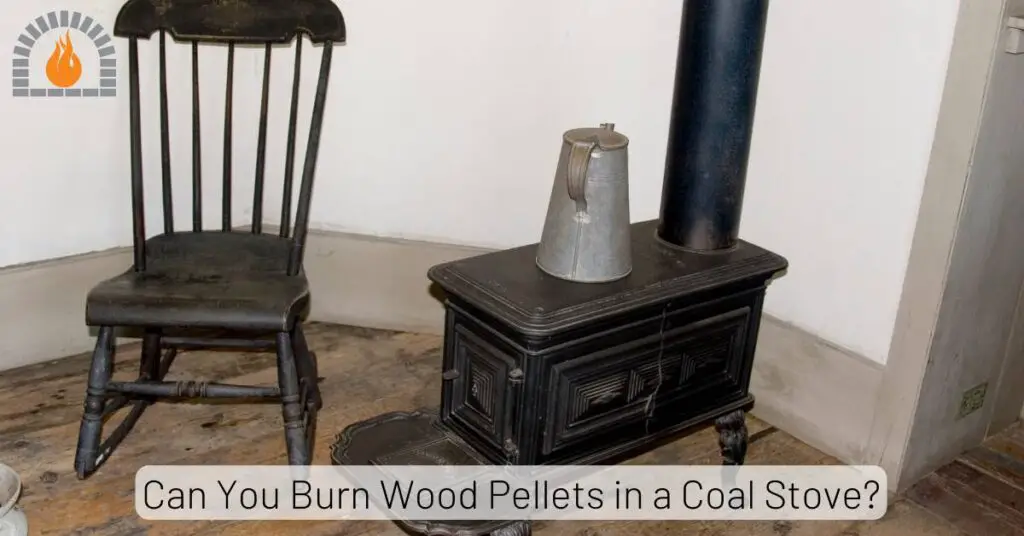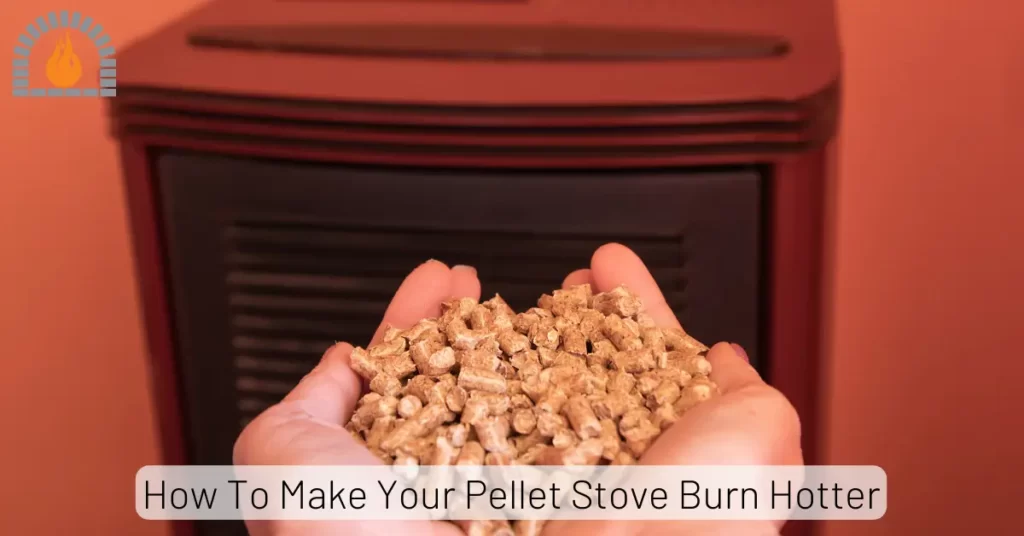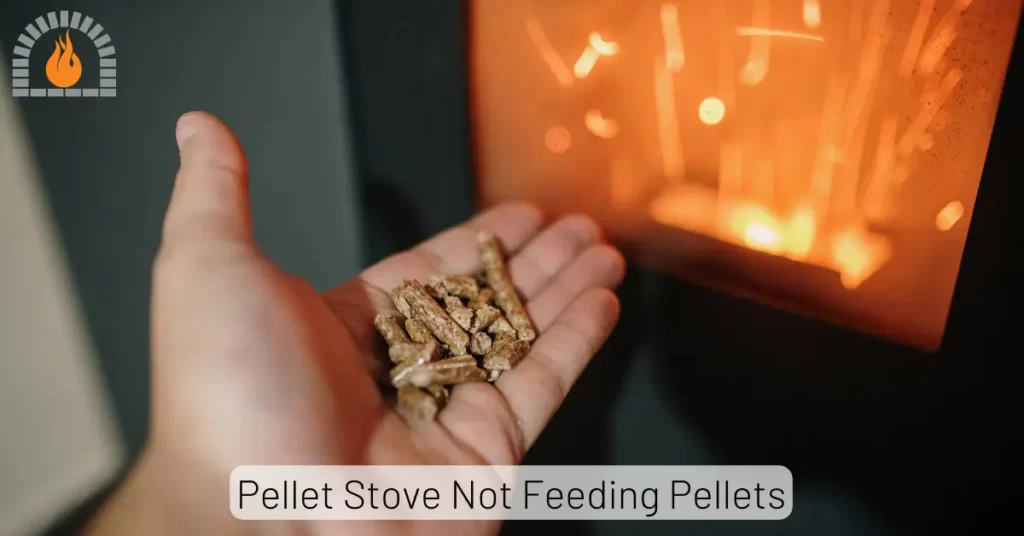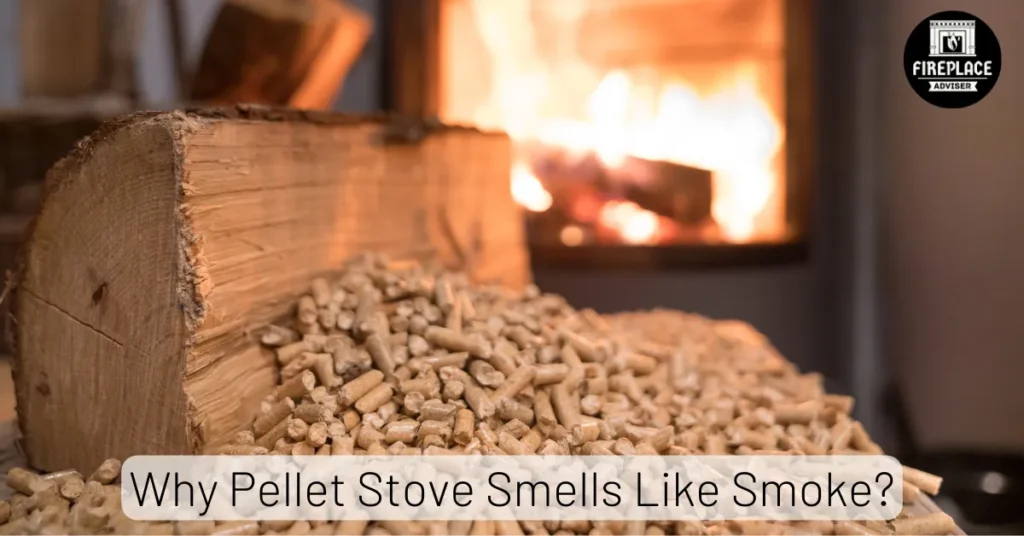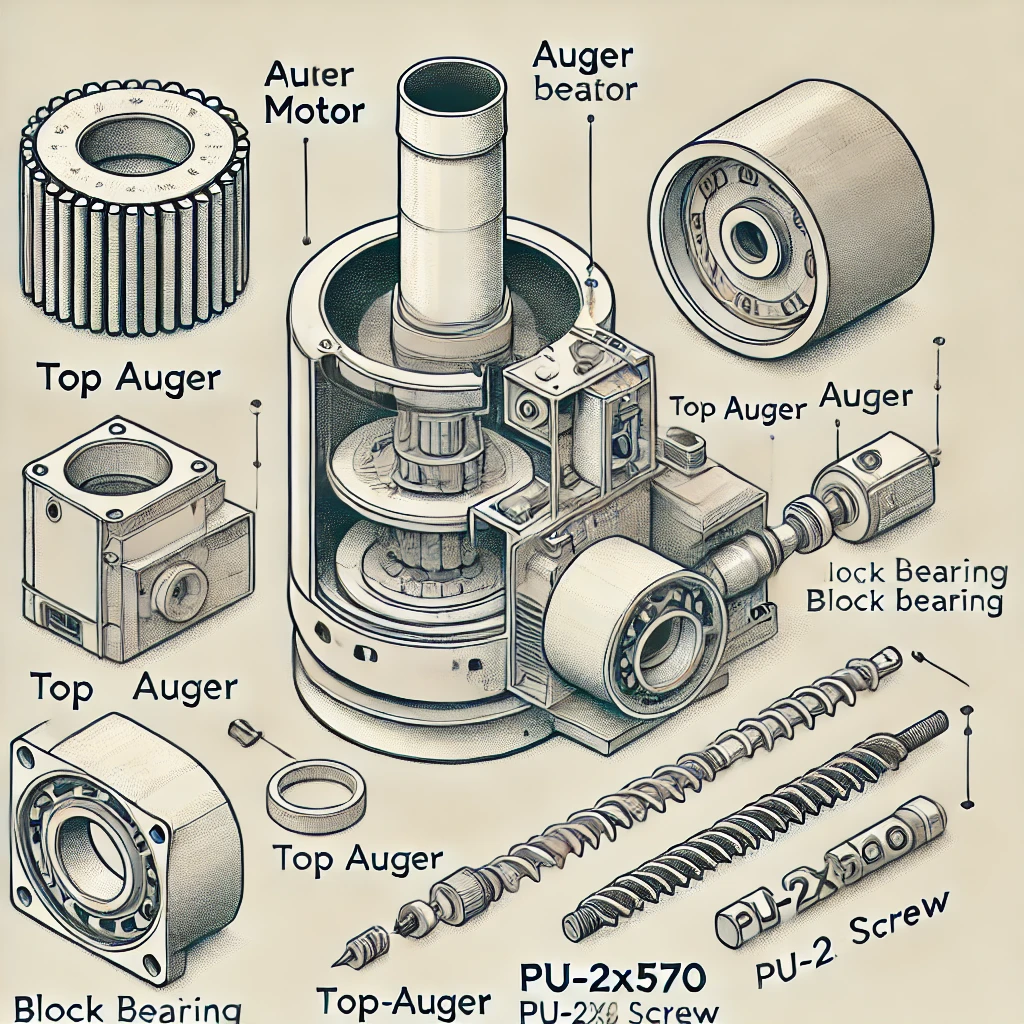The Quadrafire Pellet Stove Control Box serves as the command center for your heating appliance, managing everything from fuel feed to combustion efficiency. This essential component coordinates the complex sequence of operations that transforms wood pellets into consistent, comfortable heat for your home.
Whether you’re a new owner or have been using your pellet stove for years, understanding how your control box functions can help you maximize performance, troubleshoot issues, and extend the lifespan of your heating investment.
In this comprehensive guide, we’ll explore everything you need to know about your Quadrafire pellet stove’s control system, from basic operation to advanced troubleshooting techniques.
Key Takeaways
- The Quadrafire Pellet Stove Control Box is the brain of your heating system, managing all operational functions
- Regular maintenance can extend the life of your control box and prevent common issues
- Most control box problems can be diagnosed through error codes and systematic troubleshooting
- Installation requires attention to electrical connections and component positioning
- Professional installation is recommended for those without technical experience
- Upgrading your control box can improve efficiency and add new features to older models
What is a Quadrafire Pellet Stove Control Box?
The Quadrafire Pellet Stove Control Box is essentially the computer that operates your pellet stove. This electronic component receives input from various sensors and user controls, then processes this information to regulate the stove’s functions.
From controlling the auger motor that feeds pellets into the burn pot to managing the combustion blower that maintains proper airflow, the control box orchestrates every aspect of your stove’s operation.
Modern Quadrafire control boxes feature sophisticated microprocessors that can make real-time adjustments to optimize efficiency and maintain consistent temperatures. Many models also include diagnostic capabilities, displaying error codes when issues arise to simplify troubleshooting.
Components of the Control Box System
The control box doesn’t work in isolation; it’s part of an integrated system with several key components:
- Main Control Board: The pellet stove control board that contains the microprocessor and programming for the stove’s operation.
- User Interface Panel: The control panel with buttons, displays, and switches that allow you to operate the stove.
- Sensors: Various sensors that monitor temperature, vacuum pressure, and other operational parameters.
- Wiring Harness: The network of wires that connects the control box to motors, igniters, and other stove components.
- Power Supply: The system that converts household electricity to the appropriate voltage for the control components.
Understanding these components and how they interact is essential for proper installation and troubleshooting.
Installation Guide for Quadrafire Pellet Stove Control Box
Installing a Quadrafire Pellet Stove Control Box requires attention to detail and a basic understanding of electronics. While many DIY enthusiasts can handle this task, it’s important to follow safety procedures and manufacturer instructions carefully.
Tools and Materials Needed
Before beginning the installation process, gather the following tools and materials:
| Tool/Material | Purpose |
|---|---|
| Screwdriver set | For removing panels and securing components |
| Wire strippers/crimpers | For preparing electrical connections |
| Multimeter | For testing electrical connections |
| Needle-nose pliers | For manipulating small components and wires |
| Electrical tape | For insulating connections |
| New control box kit | Includes control board, wiring harness, and instructions |
| Owner’s manual | For model-specific information |
Step-by-Step Installation Process
- Safety First: Disconnect all power to the pellet stove by unplugging it or turning off the circuit breaker. Allow the stove to cool completely if it has been in use.
- Access the Control Box: Remove the outer panels of your pellet stove according to the manufacturer’s instructions. This typically involves removing several screws from the back or sides of the unit.
- Document Connections: Before disconnecting any wires, take photos or make a diagram of how everything is connected. This will be invaluable when installing the new control box.
- Remove the Old Control Box: Carefully disconnect all wiring harnesses and sensors connected to the control box. Remove any mounting screws securing the box in place.
- Prepare the New Control Box: Compare the new control box with the old one to ensure compatibility. Some models may require minor adjustments or the transfer of certain components from the old unit.
- Install the New Control Box: Position the new control box in the same location as the old one and secure it with the appropriate screws.
- Connect Wiring: Reconnect all wiring harnesses and sensors to the corresponding terminals on the new control box. Refer to your documentation or photos to ensure proper connections.
- Test Connections: Use a multimeter to check that all connections are secure and that there are no short circuits.
- Reassemble the Stove: Replace all panels and covers that were removed during the installation process.
- Power On and Test: Restore power to the stove and test all functions to ensure the control box is operating correctly.
Professional Installation vs. DIY
While many homeowners can successfully install a Pellet Stove Control Box themselves, there are advantages to professional installation:
| Factor | DIY Installation | Professional Installation |
|---|---|---|
| Cost | Lower cost (only parts) | Higher cost (parts + labor) |
| Time | May take longer for inexperienced individuals | Typically completed in 1-2 hours |
| Warranty | May void warranty if not installed correctly | Maintains warranty coverage |
| Expertise | Requires technical knowledge | Installer has specialized training |
| Safety | Risk of improper installation | Higher safety assurance |
For those without experience in electronics or appliance repair, professional installation is recommended to ensure proper function and maintain warranty coverage.
Troubleshooting Common Control Box Issues
Even with proper installation and maintenance, issues can arise with your Quadrafire Pellet Stove Control Box. Understanding common problems and their solutions can help you quickly diagnose and resolve issues, minimizing downtime and repair costs.
Understanding Error Codes
Most modern Quadrafire pellet stoves feature diagnostic systems that display error codes when problems occur. These codes are invaluable for troubleshooting, as they point directly to the source of the issue. Here are some common error codes and their meanings:
| Error Code | Description | Potential Cause |
|---|---|---|
| E1 | Vacuum switch failure | Blocked exhaust, faulty vacuum switch, leak in exhaust system |
| E2 | High temperature limit | Blocked exhaust, dirty heat exchanger, faulty limit switch |
| E3 | Auger motor failure | Jammed auger, faulty motor, bad connection |
| E4 | Ignition failure | Faulty igniter, poor pellet quality, air flow issues |
| E5 | Room sensor failure | Faulty sensor, bad connection, incorrect placement |
| E6 | Control box failure | Internal component failure, power surge, moisture damage |
When an error code appears, consult your owner’s manual for model-specific information and recommended actions.
Common Control Box Problems and Solutions
1. Control Box Not Powering On
If your control box shows no signs of power:
- Check that the stove is properly plugged in and the outlet is functioning
- Inspect the power cord for damage
- Test the circuit breaker or fuse
- Examine the wiring connections between the power supply and control box
- Look for signs of damage to the control board itself, such as burn marks or bulging capacitors
2. Display Flickering or Distorted
A flickering or distorted display can indicate several issues:
- Loose wiring connections to the display panel
- Power supply problems
- Control board failure
- Electrical interference from other appliances
Try tightening connections and ensuring the stove has a dedicated power source. If problems persist, the control board may need replacement.
3. Buttons Not Responding
When the control panel buttons don’t respond:
- Clean the control panel surface to remove any debris that might interfere with button contact
- Check for moisture damage, which can cause button failure
- Inspect the ribbon cable connecting the buttons to the control board
- Test the buttons with a multimeter to check for continuity
4. Stove Shuts Off Unexpectedly
If your pellet stove shuts off during operation:
- Check for error codes that might indicate the problem
- Ensure the exhaust and intake vents are clear
- Verify that the room temperature sensor is functioning properly
- Inspect the vacuum switch and associated tubing for leaks or blockages
- Examine the control box for signs of overheating
5. Auger Not Feeding Pellets Properly
When the pellet stove auger motor control isn’t functioning correctly:
- Check for auger jams caused by poor quality pellets or foreign objects
- Test the auger motor independently if possible
- Inspect the wiring between the control box and auger motor
- Verify that the control box is sending power to the auger motor during operation
Diagnostic Flowchart for Control Box Issues
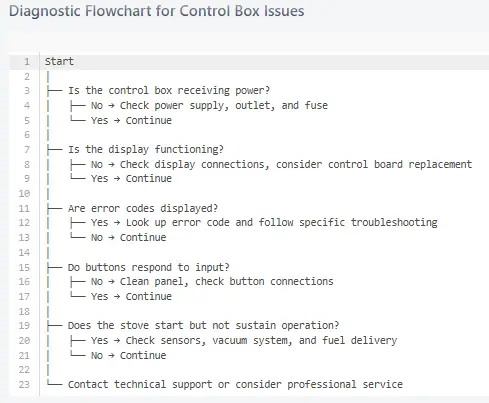
Maintenance Tips
Proper maintenance can significantly extend the life of your control box and prevent many common issues. By incorporating these practices into your regular pellet stove maintenance routine, you can ensure reliable operation and avoid costly repairs.
Regular Cleaning and Inspection
- Keep the Control Area Clean: Dust and debris can accumulate around the control box, potentially causing overheating or interfering with connections. Regularly vacuum or wipe down the area around the control components.
- Check Wiring Connections: Vibration from operation can loosen electrical connections over time. Periodically inspect and tighten any loose connections.
- Inspect for Signs of Damage: Look for discoloration, burn marks, or bulging components on the control board, which can indicate impending failure.
- Ensure Proper Ventilation: Verify that the area around the control box has adequate airflow to prevent overheating.
Seasonal Maintenance
At the beginning and end of each heating season, perform these additional maintenance tasks:
- Test All Functions: Operate all stove functions to ensure everything is working correctly before the heating season begins.
- Check Sensor Calibration: Verify that temperature and vacuum sensors are providing accurate readings.
- Update Firmware: If your control box has updatable firmware, check for and install any available updates.
- Document Performance: Keep a log of your stove’s performance to help identify any developing issues over time.
Environmental Considerations
The environment around your pellet stove can significantly impact the longevity of your control box:
- Power Quality: Consider installing a surge protector to shield your control box from power surges and electrical spikes.
- Moisture Control: Keep the area around your stove dry, as moisture can damage electronic components.
- Temperature Management: Avoid placing your stove in areas with extreme temperature fluctuations that could stress electronic components.
When to Replace Your Quadrafire Pellet Stove Control Box
Despite proper maintenance, control boxes eventually need replacement. Recognizing the signs of a failing control box can help you avoid complete system failure and the potential for more extensive damage.
Signs of a Failing Control Box
- Frequent Error Codes: Recurring error codes, especially those related to control functions, may indicate control board failure.
- Intermittent Operation: If your stove operates inconsistently without clear cause, the control box may be failing.
- Unresponsive Controls: When buttons or settings stop responding consistently, the control board may be at fault.
- Physical Damage: Visible signs of damage like burn marks, bulging capacitors, or corrosion indicate the need for replacement.
- Age: Control boxes typically last 5-10 years with proper maintenance. If your stove is approaching this age, consider proactive replacement.
Choosing a Replacement Control Box
When selecting a replacement control box for your Quadrafire pellet stove, consider these factors:
- Compatibility: Ensure the replacement is compatible with your specific stove model. Check the model number and serial number of your stove before ordering.
- OEM vs. Aftermarket: Original Equipment Manufacturer (OEM) parts are designed specifically for your stove and typically offer the best compatibility. Aftermarket options may be less expensive but could have compatibility or performance issues.
- Features: Some newer control boxes may offer additional features or improved efficiency over your original model.
- Warranty: Compare warranty options between different manufacturers and suppliers.
Replacement Cost Analysis
The cost of replacing a Quadrafire Pellet Stove Control Box can vary significantly based on several factors:
| Cost Factor | Range | Notes |
|---|---|---|
| Control Box (OEM) | $200-$500 | Varies by model and features |
| Control Box (Aftermarket) | $100-$400 | May have limited compatibility |
| Professional Installation | $100-$300 | Includes labor and testing |
| DIY Installation | $0 | Only cost is your time |
| Additional Parts | $0-$100 | May need wiring harness or sensors |
While the initial cost may seem high, replacing a failing control box can prevent more expensive damage to other stove components and improve overall efficiency.
Upgrading Your Quadrafire Control System
For owners of older Quadrafire pellet stoves, upgrading the control system can breathe new life into your heating appliance. Modern control boxes offer enhanced features, improved efficiency, and better diagnostic capabilities.
Benefits of Upgrading
- Improved Efficiency: Newer control systems often feature better algorithms for fuel and air management, resulting in higher efficiency and lower fuel consumption.
- Enhanced Diagnostics: Advanced diagnostic capabilities make troubleshooting easier and more precise.
- Smart Features: Some modern control systems offer Wi-Fi connectivity, allowing remote operation and monitoring via smartphone apps.
- Compatibility with Modern Thermostats: Upgraded controls may work with smart thermostats for better temperature management.
- Extended Appliance Life: By upgrading the control system, you can extend the useful life of your entire pellet stove.
Popular Upgrade Options
Several upgrade options are available for Quadrafire pellet stoves:
- OEM Replacement: The simplest upgrade is to replace your old control box with the latest OEM version designed for your model.
- Universal Control Kits: Some companies offer universal control kits that can be adapted to work with various pellet stove models.
- Smart Thermostat Integration: Adding a smart thermostat can provide more precise temperature control and scheduling options.
- Wi-Fi Modules: Some aftermarket systems offer Wi-Fi modules that can be added to existing control systems for remote monitoring and control.
Installation Considerations for Upgrades
Upgrading your control system may require additional considerations compared to a simple replacement:
- Wiring Modifications: New control systems may require different wiring configurations or additional sensors.
- Component Compatibility: Ensure that other components in your stove, such as motors and igniters, are compatible with the new control system.
- Programming and Calibration: Upgraded systems may require initial programming and calibration to work properly with your specific stove model.
- Professional Installation: Due to the complexity of some upgrades, professional installation may be recommended.
Safety Considerations
Working with electronic components and heating appliances requires careful attention to safety. Whether you’re installing, troubleshooting, or performing maintenance on your Quadrafire pellet stove control box, following proper safety procedures is essential.
Electrical Safety
- Power Down: Always disconnect power to the stove before working on any electrical components.
- Use Proper Tools: Ensure your tools are in good condition and appropriate for electrical work.
- Avoid Moisture: Never work on electrical components with wet hands or in damp conditions.
- Capacitor Discharge: Control boxes contain capacitors that can hold a charge even when disconnected. Allow sufficient time for discharge before handling.
Fire Safety
- Clear Combustibles: Keep all combustible materials away from your pellet stove and control components.
- Proper Ventilation: Ensure your stove has adequate ventilation to prevent overheating of electronic components.
- Regular Inspection: Regularly inspect your stove and control box for signs of overheating or damage.
- Install Smoke Detectors: Ensure your home has working smoke detectors near the pellet stove.
Carbon Monoxide Safety
- Install CO Detectors: Place carbon monoxide detectors near your pellet stove and sleeping areas.
- Maintain Proper Venting: Keep exhaust vents clear and properly maintained to prevent CO buildup.
- Recognize CO Symptoms: Be aware of the symptoms of CO poisoning, including headache, dizziness, and nausea.
Personal Protective Equipment
When working on your pellet stove control box, use appropriate personal protective equipment:
- Safety glasses to protect your eyes from debris
- Heat-resistant gloves when working with recently operated stoves
- Dust mask to avoid inhaling dust and ash particles
Professional Service vs. DIY: Making the Right Choice
When it comes to installing, troubleshooting, or repairing your Quadrafire Pellet Stove Control Box, you’ll need to decide between professional service and the DIY approach. Each option has its advantages and considerations.
When to Choose Professional Service
Consider professional service in these situations:
- Limited Technical Experience: If you’re not comfortable working with electronic components, professional service is the safer choice.
- Warranty Concerns: Some manufacturer warranties may be voided if components are not installed by authorized technicians.
- Complex Issues: For problems that aren’t easily diagnosed or resolved through basic troubleshooting, professional expertise can save time and prevent further damage.
- Safety Concerns: If you’re unsure about safety procedures or the scope of the repair, professional service is recommended.
- Time Constraints: Professional technicians can typically complete repairs more quickly than DIY approaches.
When DIY Makes Sense
DIY may be appropriate in these scenarios:
- Simple Replacements: If you’re simply replacing a control box with the same model, DIY can be straightforward.
- Technical Experience: If you have experience with electronics or appliance repair, you may be comfortable handling the work yourself.
- Cost Savings: DIY can save money on labor costs, though it’s important to weigh this against the potential for mistakes.
- Learning Opportunity: For those interested in learning more about their pellet stove, DIY can be an educational experience.
Finding a Qualified Technician
If you decide to use professional service, finding a qualified technician is important:
- Manufacturer Authorized: Look for technicians authorized by Quadrafire or the manufacturer of your specific stove model.
- Certification: Technicians with certifications from organizations like the Hearth, Patio & Barbecue Association (HPBA) have demonstrated expertise.
- Experience: Ask about the technician’s experience with your specific stove model and control box issues.
- Reviews: Check online reviews and ask for references to gauge customer satisfaction.
- Warranty: Inquire about warranties on both parts and labor.
Cost-Benefit Analysis of Control Box Maintenance and Replacement
Understanding the financial aspects of maintaining or replacing your Quadrafire Pellet Stove Control Box can help you make informed decisions about your heating investment.
Maintenance Costs vs. Replacement Costs
| Aspect | Regular Maintenance | Control Box Replacement |
|---|---|---|
| Initial Cost | $50-$100 per year | $200-$500+ for parts |
| Labor Cost | $0 (DIY) or $100-$200 (professional) | $0 (DIY) or $100-$300 (professional) |
| Frequency | Annual | Every 5-10 years |
| Benefits | Prevents premature failure, extends lifespan | Restores full function, may add features |
| Risks | May not prevent all failures | Potential for installation errors |
Efficiency Gains from Upgraded Controls
Newer control boxes often offer improved efficiency compared to older models:
- Fuel Savings: Modern control algorithms can reduce pellet consumption by 5-15%, resulting in significant savings over a heating season.
- Reduced Maintenance: Better monitoring and control can reduce ash buildup and other maintenance issues.
- Improved Comfort: More precise temperature control eliminates temperature swings and improves comfort.
Long-Term Investment Perspective
When considering control box maintenance or replacement, think about the long-term investment:
- Stove Lifespan: Proper maintenance can extend the overall life of your pellet stove by several years.
- Home Value: A well-maintained, efficient heating system can contribute to your home’s value.
- Energy Independence: Pellet stoves offer an alternative to traditional heating systems, potentially reducing reliance on fossil fuels.
- Environmental Impact: Efficient pellet stoves produce fewer emissions and use renewable fuel sources.
You May Also Like:
FAQs
How do I reset my Quadrafire pellet stove control box?
To reset your Quadrafire pellet stove control box, first turn off the stove and unplug it from the power source. Wait for at least 5 minutes to allow the system to fully discharge. Plug the stove back in and turn it on. This basic reset resolves many minor issues. For specific models, there may be additional reset procedures outlined in your owner’s manual.
Why is my Quadrafire control box showing an error code?
Error codes on your Quadrafire control box indicate specific issues detected by the system’s diagnostic functions. Common causes include sensor failures, blocked exhaust systems, ignition problems, or component failures. Consult your owner’s manual for the specific meaning of the pellet stove error codes displayed and follow the recommended troubleshooting steps.
Can I replace my Quadrafire control box myself?
Yes, many homeowners with basic technical skills can replace a Quadrafire control box themselves. The process involves disconnecting power, removing the old control box, installing the new one, and reconnecting all wiring. However, if you’re not comfortable working with electrical components, professional installation is recommended to ensure proper function and maintain warranty coverage.
Are aftermarket control boxes compatible with Quadrafire pellet stoves?
Some aftermarket control boxes are compatible with Quadrafire pellet stoves, but compatibility varies by model. Aftermarket options may be less expensive than OEM parts but could have limitations in functionality or compatibility. Always verify compatibility before purchasing and consider that using non-OEM parts may affect your warranty coverage.
Affiliate Disclosure: Fireplaceadviser.com is a participant in the Amazon Services LLC Associates Program. We may earn a commission when you click on certain links on this site and purchase.

Hello!! I am Jamal Khan. I often fix my home electric heaters and gas stove problems and research the common issues in the heating units to improve my knowledge and expertise. The aim of establishing fireplaceadviser.com is to share my expertise and knowledge with my audience.














